Call +(254) 703 030 000 / 751 483 999 / 721 704 777
- Home
- Tools
- Hand Tools
- Wrenches
- Torque Wrenches Accessories
.....Read More
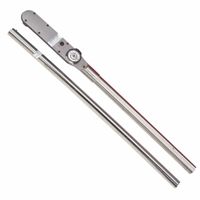
Dial Torque Wrenches
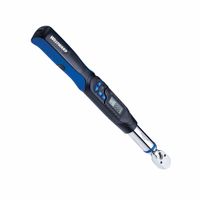
Electronic Torque Wrenches

Flat Beam Torque Wrenches

Interchangeable Head Torque Wrenches
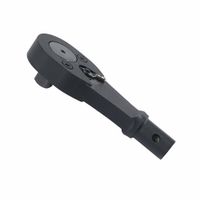
Interchangeable Torque Wrench Heads

Micrometer Torque Wrenches
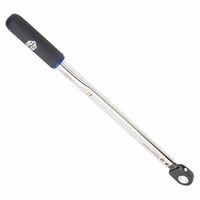
Preset Torque Wrenches
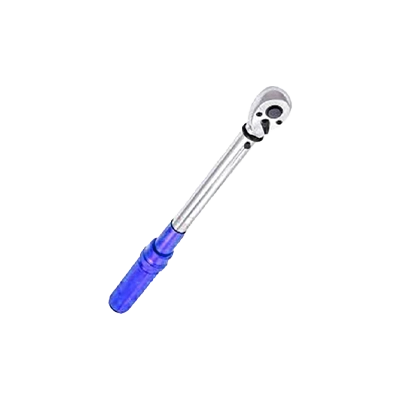
Ratcheting Micrometer Torque Wrenches
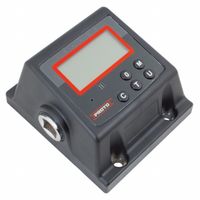
Torque Meters, Testers & Transducers
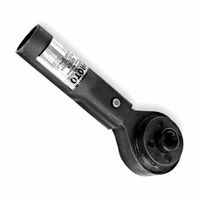
Torque Multiplier Accessories
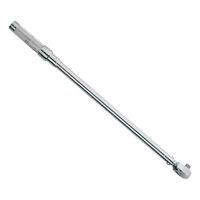
Torque Wrench Accessories
Frequently Asked Questions
What is a torque wrench used for?
A torque wrench is a precision tool used to apply a specific amount of torque to a fastener, such as a nut or bolt. It is essential in ensuring that the fastener is neither too loose nor too tight, which can prevent mechanical failure and ensure the integrity of the assembly. Torque wrenches are commonly used in automotive, construction, and industrial applications where precise torque specifications are critical.
There are several types of torque wrenches, including beam, click, digital, and dial. Each type has its own mechanism for indicating when the desired torque is reached. For example, a click torque wrench emits an audible click when the preset torque level is achieved, while a digital torque wrench displays the torque value on a screen.
Using a torque wrench involves setting the desired torque level, which is usually specified in units such as foot-pounds (ft-lb) or Newton-meters (Nm), and then applying force until the tool indicates that the set torque has been reached. This ensures that the fastener is tightened to the manufacturer's specifications, which is crucial for safety and performance.
In automotive applications, torque wrenches are used for tasks like tightening lug nuts on wheels, securing engine components, and assembling suspension parts. In construction, they are used for structural connections and in industrial settings for machinery assembly and maintenance.
Overall, a torque wrench is an indispensable tool for any task requiring precise torque application, helping to prevent damage, ensure safety, and maintain the longevity of mechanical systems.
How do you use a torque wrench?
1. **Select the Right Torque Wrench**: Choose a torque wrench suitable for your task, considering the torque range and drive size.
2. **Set the Desired Torque**: Adjust the torque setting by turning the handle or dial to the specified torque value required for your task. Ensure the setting is locked in place if your wrench has a locking mechanism.
3. **Prepare the Fastener**: Ensure the bolt or nut is clean and properly threaded. Apply lubricant if specified.
4. **Attach the Socket**: Select the appropriate socket size for the fastener and attach it to the torque wrench.
5. **Position the Wrench**: Place the socket over the fastener, ensuring it is fully seated and aligned.
6. **Apply Torque**: Hold the wrench handle and apply force smoothly and steadily. Avoid sudden jerks or applying force at an angle.
7. **Listen for the Click**: For click-type wrenches, listen for the click sound or feel the slight release indicating the set torque has been reached. Stop applying force immediately.
8. **Check the Reading**: For beam or digital wrenches, monitor the scale or display to ensure the desired torque is achieved.
9. **Release the Tension**: After use, reset the torque wrench to its lowest setting to maintain calibration.
10. **Store Properly**: Clean the wrench and store it in a protective case to prevent damage.
11. **Regular Calibration**: Periodically calibrate the torque wrench to ensure accuracy.
By following these steps, you can effectively use a torque wrench to apply precise torque to fasteners, ensuring proper assembly and preventing damage.
How do you set a torque wrench?
1. **Identify Torque Specification**: Determine the required torque setting for the fastener from the vehicle's manual or the part's specification sheet.
2. **Select the Correct Torque Wrench**: Choose a torque wrench that covers the required torque range. Common types include click, beam, and digital torque wrenches.
3. **Unlock the Wrench**: If your torque wrench has a locking mechanism, unlock it by turning the lock knob or collar counterclockwise.
4. **Set the Torque Value**:
- For a click-type wrench, rotate the handle to adjust the scale to the desired torque value. Align the main scale with the micrometer scale for precise settings.
- For a beam-type wrench, note the pointer position and apply force until the pointer aligns with the desired torque value.
- For a digital wrench, use the buttons to set the desired torque value, which will be displayed on the screen.
5. **Lock the Setting**: If applicable, lock the torque setting by turning the lock knob or collar clockwise to prevent accidental changes.
6. **Attach the Socket**: Secure the appropriate socket to the drive of the torque wrench.
7. **Position the Wrench**: Place the socket over the fastener and ensure the wrench is perpendicular to the fastener to avoid inaccurate readings.
8. **Apply Torque**:
- For a click-type wrench, apply force steadily until you hear or feel a click, indicating the set torque has been reached.
- For a beam-type wrench, apply force until the pointer aligns with the desired torque value.
- For a digital wrench, apply force until the device signals (beep or light) that the set torque is achieved.
9. **Release the Wrench**: Carefully remove the wrench from the fastener.
10. **Reset the Wrench**: For click-type wrenches, reset to the lowest setting to maintain calibration.
What are the different types of torque wrenches?
1. **Beam Torque Wrench**: Utilizes a simple lever arm and a scale to indicate torque. As force is applied, the beam bends, and the pointer indicates the torque on a scale.
2. **Click Torque Wrench**: Features a clutch mechanism that produces a clicking sound when the preset torque is reached, preventing over-tightening.
3. **Dial Torque Wrench**: Equipped with a dial gauge that provides a precise torque reading. It is often used for calibration and quality control.
4. **Digital Torque Wrench**: Offers electronic measurement and display of torque values. It often includes features like memory storage, data transfer, and alerts.
5. **Split Beam Torque Wrench**: Similar to the beam type but with a split beam design that reduces the need for recalibration and provides a more consistent torque application.
6. **Hydraulic Torque Wrench**: Uses hydraulic pressure to apply torque, suitable for high-torque applications in industrial settings.
7. **Electronic Torque Wrench**: Similar to digital wrenches but often includes advanced features like angle measurement and Bluetooth connectivity for data logging.
8. **Micrometer Torque Wrench**: Allows for precise torque settings using a micrometer-style adjustment, often used in automotive and mechanical applications.
9. **No-Hub Torque Wrench**: Specifically designed for tightening no-hub couplings in plumbing applications, ensuring a consistent seal.
10. **Mechatronic Torque Wrench**: Combines mechanical and electronic components for enhanced accuracy and data management, often used in professional settings.
11. **Programmable Torque Wrench**: Allows users to set multiple torque values and sequences, useful in assembly line operations.
12. **Slipper Torque Wrench**: Prevents over-tightening by slipping once the preset torque is reached, commonly used in precision applications.
How do you calibrate a torque wrench?
1. **Gather Equipment**: Obtain a calibration device or torque tester, a vice, and a known weight or calibration standard.
2. **Secure the Wrench**: Place the torque wrench in a vice, ensuring it is held securely without damaging it.
3. **Set the Wrench**: Adjust the torque wrench to the desired setting you wish to calibrate.
4. **Attach to Tester**: Connect the wrench to the torque tester or calibration device. Ensure it is properly aligned to avoid skewed results.
5. **Apply Force**: Gradually apply force to the wrench until it clicks or indicates the set torque value.
6. **Record Reading**: Note the reading on the calibration device. Compare it to the wrench's setting.
7. **Adjust Wrench**: If the reading is off, adjust the wrench according to the manufacturer's instructions. This may involve turning an adjustment screw or knob.
8. **Repeat**: Test multiple times to ensure accuracy. Adjust as necessary until the readings match the set value consistently.
9. **Document Results**: Record the calibration results, including the date, settings, and any adjustments made.
10. **Reassemble**: Once calibrated, remove the wrench from the tester and vice. Ensure all parts are intact and functioning.
11. **Regular Checks**: Schedule regular calibration checks to maintain accuracy, especially if the wrench is used frequently or for critical applications.
Why is it important to use a torque wrench?
A torque wrench is crucial for ensuring that fasteners, such as bolts and nuts, are tightened to the manufacturer's specified torque. This is important for several reasons:
1. **Safety**: Proper torque ensures that components are securely fastened, reducing the risk of parts loosening and causing accidents or failures. Over-tightening can lead to bolt failure, while under-tightening can result in parts coming apart.
2. **Performance**: Correct torque settings ensure optimal performance of mechanical systems. For example, in automotive applications, proper torque on engine components ensures efficient operation and longevity.
3. **Preventing Damage**: Over-tightening can strip threads, warp components, or cause stress fractures, leading to costly repairs or replacements. A torque wrench helps avoid these issues by applying the correct amount of force.
4. **Consistency**: Using a torque wrench ensures that each fastener is tightened uniformly, which is critical in applications where even pressure distribution is necessary, such as in gasket sealing or wheel installation.
5. **Compliance**: Many industries have standards and regulations that require specific torque settings for safety and quality assurance. Using a torque wrench helps meet these requirements and maintain compliance.
6. **Longevity**: Properly torqued fasteners reduce wear and tear on components, extending the lifespan of machinery and equipment.
7. **Precision**: Torque wrenches provide precise control over the amount of torque applied, which is essential for sensitive or high-stakes applications, such as aerospace or medical devices.
In summary, a torque wrench is an essential tool for ensuring safety, performance, and reliability in various applications by providing precise and consistent torque to fasteners.
Can a torque wrench be used in reverse?
Yes, a torque wrench can be used in reverse, but it depends on the type of torque wrench and the specific application. Most click-type torque wrenches are designed to measure torque in one direction, typically clockwise, for tightening fasteners. However, some models are reversible and can be used to measure torque in the counterclockwise direction for left-hand threads.
Beam-type torque wrenches can generally be used in both directions because they rely on the deflection of a beam to indicate torque, which works regardless of the direction of force. Digital torque wrenches may also offer reversible functionality, depending on the model and settings.
It's important to check the manufacturer's specifications to ensure that the torque wrench is designed for reverse use. Using a torque wrench in reverse when it is not designed for it can lead to inaccurate readings or damage to the tool. Additionally, when using a torque wrench in reverse, ensure that the fastener or application requires a specific torque setting in that direction to avoid over-tightening or damaging the components.